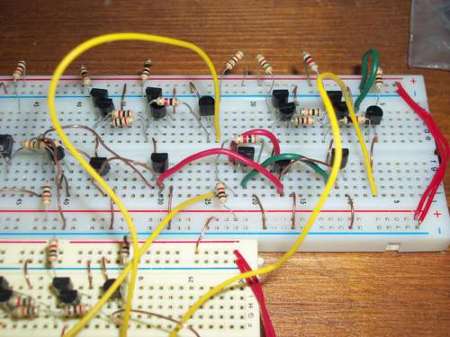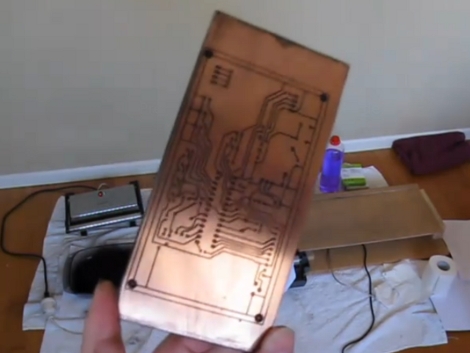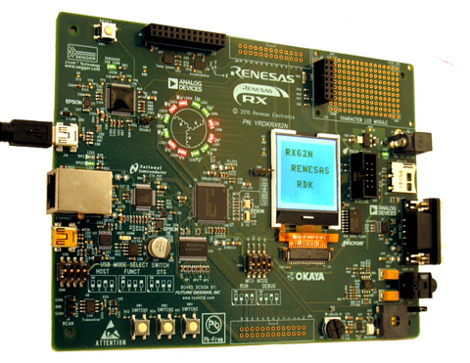We’ve seen these little toys called “sugar cubes” by GirlTech around for a while now. They are a toy block, with an LCD on the front and they respond to movement, button presses and they interact with each other if you stack them up. We’re just as curious as anyone else about their internals, but maybe not quite curious enough to rush out and buy one. Luckily, we don’t have to as [Joby] has done it for us and documented what he found. While it may be lacking in extreme detail, at least our curiosity is somewhat satiated.
We can see that it has a 16×16 LCD, an unknown chip hidden under an epoxy blob as usual. To determine what character is shown, you can bridge one of 4 spots on the PCB, though he has only managed to switch to a little ninja and a question mark. Does anyone have any brilliant ideas on a project for these?
Year: 2010
C# Portable Settings Provider
We live in a world where everything must be portable, ranging from mobile applications to making an application able to run on Linux, Windows and OS X. Making a C# application to be completely portable across all windows computers is a problem that Microsoft knows about and willingly admits they will not fix. [Mike] from Geek Republic has taken it upon himself to show us how to hack up some code to make your programs portable. This code is a good push forward for people loving the portability of modern applications. He will admit that bugs may exist so be on the lookout and he would probably appreciate the feedback. Looking forward to a fully working provider so that .NET applications can be carried wherever people go!
Breadboarding RAM

If you’ve ever wanted to dive in and take a look at how memory hardware is implemented here is a good example of how to implement some latching circuits with ether BJT or CMOS transistors. BJTs require biasing resistors which increases the complexity and power consumption when compared to CMOS. If power consumption isn’t an issue you could certainly make some really fast logic.
Most modern on chip RAM is made using SRAM because it only takes six transistors to implement(vs eight) and is pretty fast. When it comes to density DRAM can get one bit of storage by using a single transistor and capacitor(putting the capacitor underneath he transistor can save even more space). All that said, latches and flip flops are still a very useful (and common) tool when working with digital circuits.
Direct To PCB Inkjet Printing

[Rhys Goodwin] has been working on a system to print resist onto copper clad using an inkjet printer. This is a toner transfer alternative as it still uses toner, just not quite as you’d expect. The first step is to modify an inkjet printer, separating the carriage from the feed rollers in order to increase the clearance for the substrate. Instead of printing with etch resistant ink, as we’ve seen before, [Rhys] prints with black ink and then covers the board (ink still wet) in laser toner. Once there’s good adhesion he blows off the excess and bakes the board in a sandwich press, with spacers to keep the iron from touching the surface of the copper clad. This cooks the resist into a hard plastic layer and the board is ready for the acid. Watch him walk you through the process after the break.
[Rhys] uses the same method for silk screen, printing in red and baking the ink onto the substrate without added toner. This produces a nice looking board but it’s still quite a bit of work. It certainly sheds more light on the process than that laser-printer method from back in May. We hope you’ve been inspired by this and come up with the next innovation that makes this process easier.
Pulito: The LEGO Roomba

When [Dave] installed hardwood flooring in his house, he needed a solution to help automate the monotonous task of routine sweeping. Rather than go out and buy one of the many existing automated sweep robots out there, he decided to use his passion for LEGO Robotics to design and build a NXT based Swifferbot he calls Pulito. His version implements all the important features such as object avoidance using bump sensors, an IR beacon used to automatically return to the charging station, and a photoresistor to monitor the charge of the battery. [Dave] also includes a nifty LEGO sensor multiplexor, allowing him to save on I/O ports, which is almost worth sharing by itself.
Videos after the break.
Renesas RX Design Contest: $110K+ Of Cash And Prizes

It seems that we have caught Design Contest Fever here at Hackaday. After covering some other design contests, and asking readers to send in more, we heard from a couple tippers about Renesas’ challenge. Like many of the other contests, entrants can submit their ideas, and possibly receive a free development board to get them started. Unlike the other contests though, Renesas board (possibly) free development board is everything but the kitchen sink. Designed with RTOS’s in mind, rather than the normal microcontroller tasks, this board has an astounding number of capabilities.
On top of the excellent development kit, the contest is also offering books, software, and cash prizes to the winners. So get out there, design something amazing, and make Hackaday proud.
Debug Mode Lurking Inside AMD Chips

Looks like some hardware enthusiasts have worked out a method to enable debug mode within AMD processors. The original site isn’t loading for us, but the text has been mirrored in this comment. Getting the chip into debug mode requires access passwords on four control registers. We’ve read through the writeup and it means very little to us but we didn’t pull out a datasheet to help make sense of the registers being manipulated. It shouldn’t be hard to find an old AMD system to try this out on. We’d love to hear about anything you do with this debug system.
[via Slashdot]










